How to protect your pets from Animals, Pests and Wildlife
When pets are running around outside, often unattended, they are at risk of being harmed by wild animals. No matter the season, animals are often outside wandering around looking for food. Pets don’t have the same survival skills as wildlife and can easily be overtaken by an outdoor creature. There are a variety of animals your pet could encounter, each with their own associated risks. It’s important to learn some tips for protecting pets from raccoons and other wildlife.
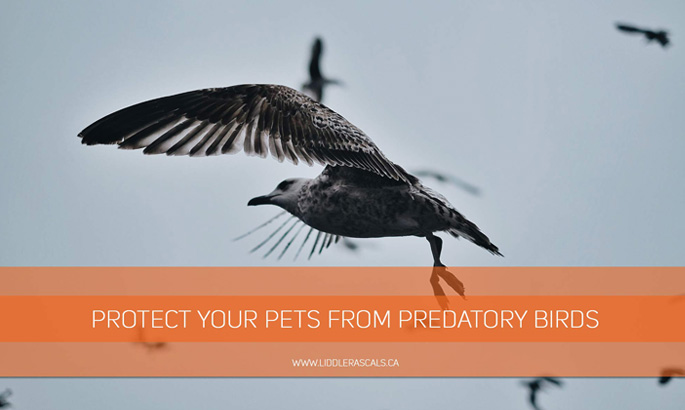
Credit: Emre Gencer
Birds
A cat may bring birds home and drop them on the doorstep. Cats will attack birds, and “outdoor cats” are the main reason some bird species numbers have dramatically decreased in North America. However, there are also many types of birds that attack cats or small dogs, and can even carry them away. Many pets like to go outside and enjoy the backyard, so what do you do to keep them safe from harm?
One of the best techniques for keeping birds away is to use visual deterrents to frighten them away. These include plastic owls, flags that deter birds by moving in the wind, and various other ingenious tools for this purpose. Another good idea is to hang mirrors, pie tins, or reflective strips in the garden or back. The light will startle large birds and keep them away from the yard.
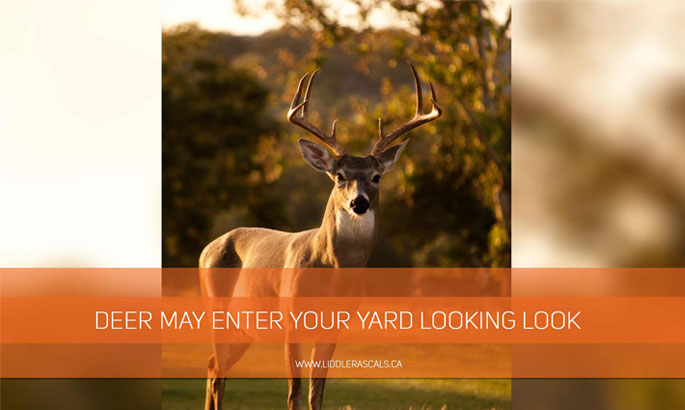
Credit: Laura College
Deer
Pets may be curious about deer at the cottage, or near your home (if you live in a less-populated area). Your furry friends may try to get close to them. Fawns and bucks stay near does during certain times of year, and a curious pet is at risk of being attacked by a buck who thinks the animal is threatening their young. Bucks have strong antlers and can do a lot of damage, so it’s important to prevent this scenario from happening.
The best approach to keep deer attacks from occurring (in addition to keeping a close eye on your pet) is to fence your surrounding areas. That way deer can’t enter the premises and pets are safe to stroll around without risk.
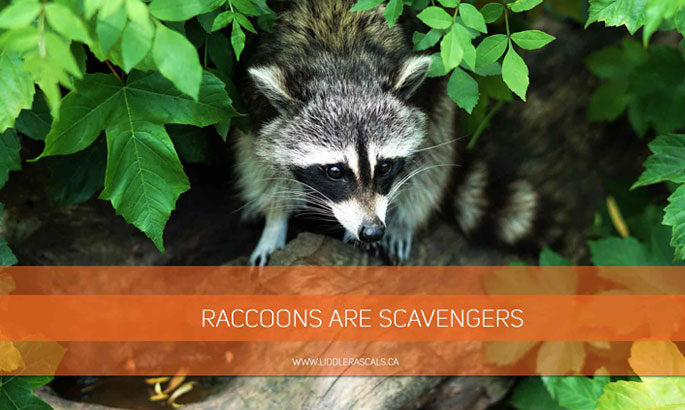
Credit: Erwan Hesry
Raccoons
Raccoons are mostly active at night, so don’t let pets wander around outside during that time. Although raccoons are not necessarily violent and would probably not initiate a fight, if your pet is threatened or territorial it may start a confrontation with a raccoon. Not only can cats and dogs be seriously harmed by raccoons, they can contract a disease. Raccoons are known to carry rabies, roundworm, leptospirosis, and other infectious diseases. Talk to your veterinarian about immunizing your pet, including with a rabies shot.
Like with other animals, it’s important to take measures to keep raccoons out of your yard. Not leaving pet food or treats outside is one step, because wildlife will try to eat it. As with coyotes and lynx, raccoons will make every effort get into the garbage for food, so keep bins secured. If possible, store them in a closed outdoor space like a shed.
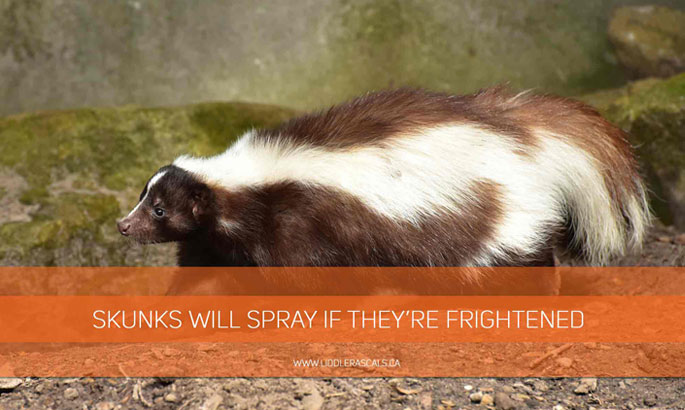
Credit: Sipa
Skunks
Skunks are seen most frequently around the GTA in February, the heart of winter. If a cat or dog messes with a skunk they may get sprayed with the stinky sulphuric stench these creatures give off when threatened. You definitely want to prevent your pet and your home from being suffused with this scent. Other than the spray, skunks aren’t dangerous. They won’t attack first, and they will only spray if they’re frightened. The spray is also painful when it stings the eyes — if your cat or dog does get “skunked” in the face, place washcloths with cold water on their eyes to relieve the burn. There are also some recipes to wash the odour from their coat, but they’ll likely still smell it on themselves long after you think it’s passed.
Skunks enter the yard because they think they will find food. Skunks are night creatures, and they like to forage when it’s dark and they’re less likely to be seen. A motion sensor in your yard could be an excellent deterrent. A motion sensor with a sprinkler that is triggered to go on is another good idea. Finally, enclosing the yard with a fence or barrier may prevent skunks from getting in, because they are not good climbers.
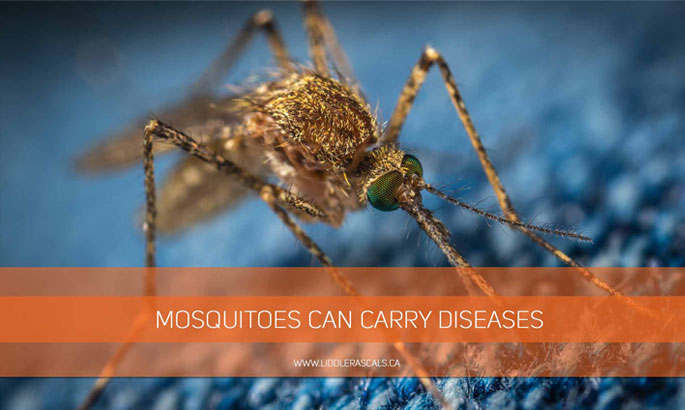
Credit: Erop Kamelev
Mosquitos and Pests
These may not exactly qualify as wild animals, but they are Canadian “wildlife” which are a risk to home pets and so they’re worth a mention. Mosquitos and other flying insects often carry disease (e.g. Zika virus or heartworm). Pets are unprotected from this kind of transmission, even if they’re on heartworm medication. Put screens on all your windows to prevent flying insects from entering your home. There are also several plants you can grow to repel mosquitoes.
Another important element is to prevent these types of insects from multiplying. Mosquito larvae live and develop in water. Avoid leaving standing water around your property. Empty buckets, barrels, or any other container that may collect rainwater. If you put out a bird bath, wash it thoroughly every few days so larvae don’t sit on the bottom.
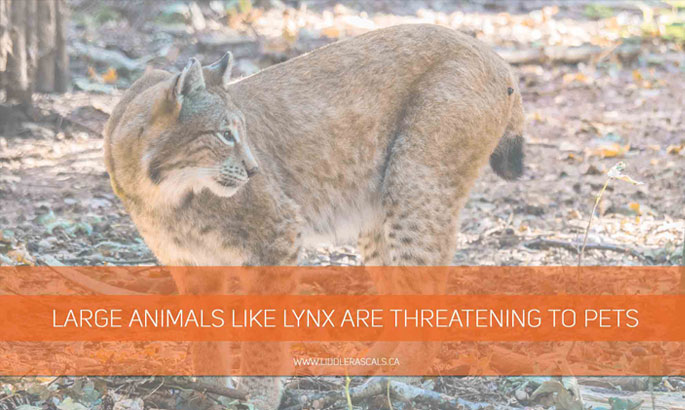
Credit: Heidelbergerin
Lynx and Coyotes
These bigger animals can be threatening to house pets. Like other wildlife, they will enter a yard searching for food. If there are trees where fruit has fallen on the ground, these animals will be tempted to come closer to your domicile. Collect all fruit that falls off your trees on a regular basis. There are even community organizations that can do it for you. As mentioned beforen secure garbage and organics bins with straps so animals can’t open them, and (if possible) store them somewhere closed like a shed or garage. Finally, get your bushes and shrubs trimmed so that large animals can’t use them to hide.
General Tips
Besides the animal-specific tips already discussed, there are some general points to keep in mind to protect your pets from Canadian wildlife.
- Get all pet vaccinations up to date.
- Keep your pet indoors or walk them on leash.
- If there’s a dangerous (or sick) wild animal frequently wandering around your yard, consider contacting a wildlife removal company.
- Secure the area. Don’t leave doors or windows open so wildlife can enter your home.
- Clear nearby outdoor spaces of excess vegetation, debris, shrubs, and branches.
Hopefully now that you’ve read these tips for keeping pets protected from wildlife, you feel much more secure. In Canada we have diverse, beautiful wildlife, but they can sometimes be dangerous to our beloved pets. Never try to hurt a wild animal (it’s illegal in most places); call the experts.
Liddle Rascals is ready to handle your wildlife problem right away. We specialize in humane animal removal around Toronto, North York, Markham, and Pickering. If there’s an animal around your home that’s causing your problems, give us a call at (416) 356-5886. We’re here to help. Look at our complete list of services. Keep your pets safe year-round.
Liddle Rascals can help protect your pets in Toronto or the Greater Toronto Area, contact Liddle Rascals Wildlife Control. We offer animal removal services that are safe and humane for both the residents and the animals in question. Our services include a thorough home inspection and advice on repairs, remedies, and prevention.
Expert Skunk and Wildlife Removal in the Greater Toronto Area
We are available 24 hours a day, seven days a week.
Call us at (416) 356-5886 or contact us online.





Leave a Reply
You must be logged in to post a comment.